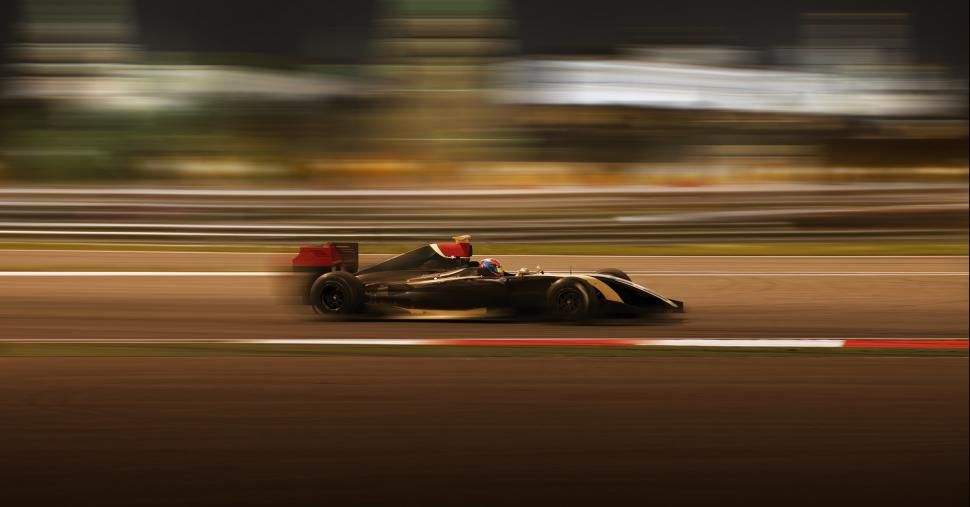Think about the design of a Formula 1 racing car; consider the intricacies involved — the car needs to travel at speeds of up to 200mph, grip the ground, take bends with ease, behave predictably in most weather conditions, remain cool despite incredible speed and fast-moving parts, and it definitely, definitely can’t take off. This complex set of considerations form the basis of the design of the world’s most famous cars, incorporating the field of fluid mechanics study called aerodynamics.
Designing a Formula 1 car is a complex process, made even more so by the stringent rules placed on designers and developers. For example, there is a maximum allowable period of wind tunnel aerodynamics testing, currently set at 60 hours, during which teams are allowed a maximum of 25 hours of ‘wind on’ time or up to 68 test runs, whichever limit is reached first.
An equation is used to deduct usage from an overall Computational Fluid Dynamics allowance, and all wind tunnel activity is closely monitored to ensure compliance. Formula 1 bosses have even set up a group to try to break the new rules it has implemented for upcoming regulations changes. The 2021 group comprises aerodynamics experts who are tasked with pushing rules to their limit in an effort to find exploitable loopholes.
Wind tunnel testing has been in use in Formula 1 since the 1970s, when the importance of aerodynamics within the design and development of racing cars first became apparent. Until the 1990s, wind tunnel testing was carried out primarily at Southampton University and London’s Imperial College, until teams with more money began building their own tunnels to avoid sharing facilities and to gain a competitive advantage.
Testing involves measuring drag, downforce, balance and pressures, with the aim of creating the perfect Formula 1 car, something which has been fine-tuned over many years of design and aerodynamic testing. Downforce is responsible for keeping the car on the ground, and has to be consistent, taking into consideration that a car may be cornering at the same time as braking or accelerating. This balance has to be carefully calculated; if there isn’t enough downforce on the front of vehicle, the car will be unable to turn into a corner, while a lack of pressure on the rear of the car will make it slide and send it spinning into the opposite direction.
In 1979, Lotus got pretty close to perfection, designing a car that not only took a straight at great speed, but that utilised downforce so perfectly that it held its speed while rounding corners. The Lotus 79 was designed with the addition of ‘skirts’ in the form of brushes along the car’s width. The skirts made a seal, stopping air from escaping, and generating enough negative pressure to suck the car to the ground. This breakthrough car was hailed a marvel, and became the first ground effect car to win the world championship, at the hands of Mario Andretti.
Design has moved on since then, and although some principles remain, others split designers into two camps. One such area in which designers are torn is the design of the rake angle. The rake angle refers to the difference between the ride height at the front of the car and the back. If this angle is high — as is the design of University of Southampton graduate, Formula 1 aerodynamicist and Red Bull’s chief technical officer, Adrian Newey — the back of the car sits a long way off the ground.
This design accelerates airflow beneath the car as pressure is released and flows past the lowest point. This creates more downforce and is a concept that has been successful for the past twenty years with Newey’s cars taking four world double titles in 2013 with Sebastian Vettel at the wheel. Many other teams are of the opinion that as Newey’s car has been so successful, his design should be adopted in good faith; being tied to stringent aerodynamic testing rules means that it is impossible to design and full test two cars to see which rake angle is superior. Bucking this trend is Mercedes, which uses a low rake design with the bottom of the car closer to the ground.
The principle behind this is that the car will create less drag and will have a lower centre of gravity, meaning better performance and a reduction in tyre degradation. And Mercedes seems to be on a winning streak, but as to whose design is the best: who knows?
Suffice to say, aerodynamics is the true driving force under Formula 1.
